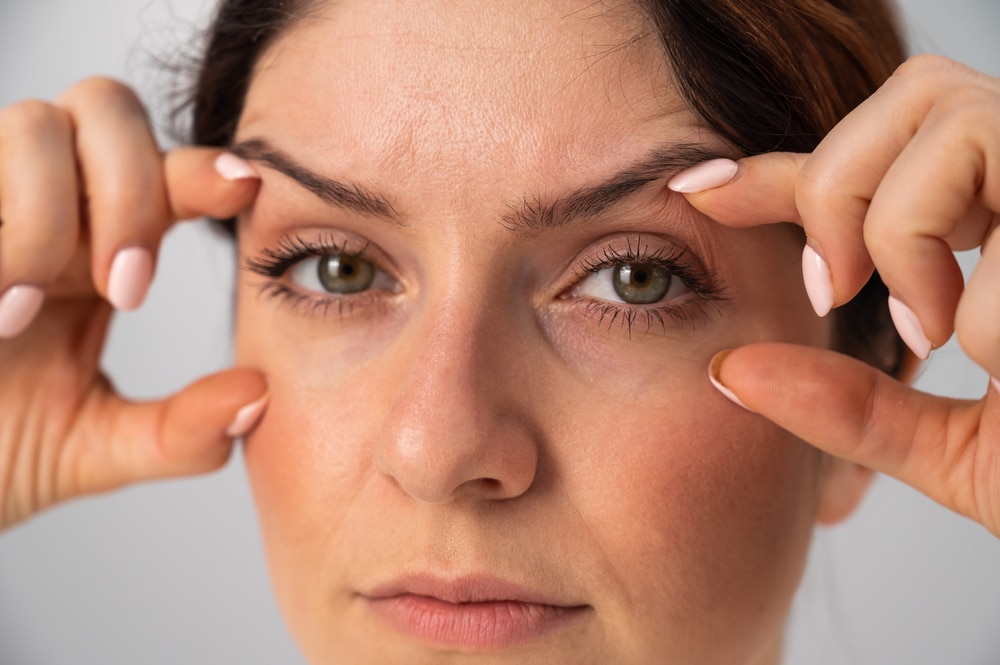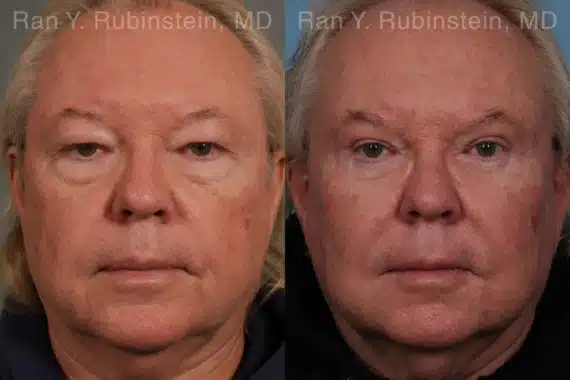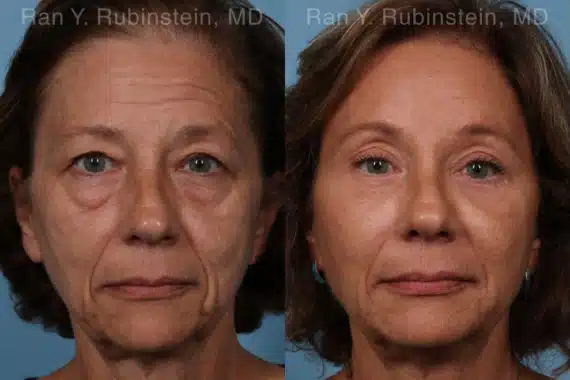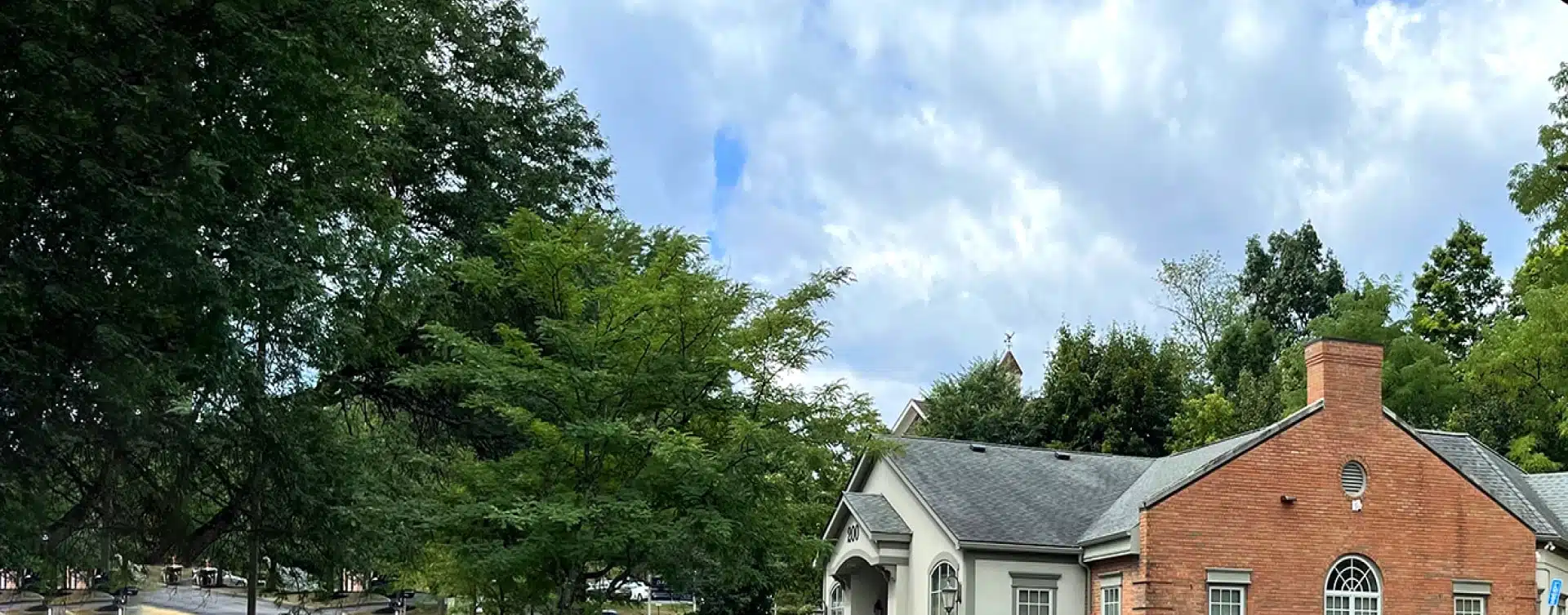You’ve made the decision. You’ve gone through the eyelid surgery. Now, you’re standing in front of the mirror, wondering, When will I look like myself again? If you’re feeling anxious, frustrated, or even a little regretful, know that you’re not alone. Almost everyone who undergoes blepharoplasty surgery experiences this emotional rollercoaster.

How Long After Blepharoplasty Will I Look Normal?
In most cases, people feel ready to return to their normal activities, including going out in public or returning to work after about 10-14 days . However, residual swelling may persist for up to three weeks, and the recovery process continues for months. Your eyes will keep improving for up to three months as the tissues settle and the final results become more apparent.
Blepharoplasty Recovery Timeline
The first few days after surgery are often the hardest. Your eyelids may feel tight, swollen, and bruised. It’s normal to wake up feeling puffy, and you might even wonder if you made the right choice. Rest assured, these early changes are temporary. Keeping your head elevated, using cold compresses, and following your doctor’s postoperative care instructions will help speed up healing.
Day by Day Recovery Breakdown:
- Day 1-2: Immediate aftermath, swelling, and discomfort.
- Day 3-5: Visible bruising and tightness.
- Day 7: Stitches or sutures may be removed.
- Week 1: Significant swelling and bruising subside.
The First Week: Swelling, Bruising, and Doubt
- By the second week, swelling and bruising begin to fade.
- Suture removal may take place, and some patients feel comfortable applying eye makeup to cover any remaining discoloration.
- Sunglasses can also help mask the healing process when outdoors.
- During this intermediate healing phase, minor puckering or tightness may still be present. This typically resolves on its own.
- Avoid strenuous activities that could strain healing tissues.
Weeks 2-4: The Turning Point
- By the end of the first month, most of the noticeable swelling is gone.
- Subtle changes continue as scars fade, and the eyelid skin settles.
- Your appearance evolution begins to take shape. At this stage, individual healing rates vary.
- Some may see full recovery within 6-8 weeks, while others may need up to three months for the eyelid surgery recovery time to fully stabilize.
One to Three Months: A New Normal
- By the three-month mark, your eyelid lift surgery results are nearly final.
- Any residual swelling is minimal, and the healing journey nears completion.
- Eyelid surgeries improve over time, and long-term satisfaction is often high.
Three to Six Months: The Final Transformation
Start Your Journey to Success, Don’t Wait More!
Join our satisfied clients who’ve experienced safe, effective treatments.
The Emotional Side of Healing
Healing isn’t just physical—it’s mental, too. It’s completely normal to feel self-conscious or impatient at times. If you have moments of doubt, remind yourself why you chose this cosmetic surgery procedure. Looking at before and after photos instead of focusing on day-by-day changes can help you see how far you’ve come. Final results becoming more apparent over the next few months. Patients should follow their surgeon’s post-operative instructions carefully to optimize their healing process.
Probable Side Effects After Blepharoplasty
While blepharoplasty recovery is generally smooth, temporary side effects may include:
- Swelling and Bruising: Improves significantly after two weeks.
- Tightness or Dry Eyes: Some patients experience blurry vision or mild eye strain.
- Puckering: Temporary puckering of the eyelid skin may occur but improves with time.
- Asymmetry: Swelling may cause minor imbalances that resolve as healing progresses.
- Sensitivity to Light: Wear sunglasses to protect sensitive eyelids from bright light.
If you experience excess swelling or signs of infection, contact your eye surgeon immediately.
Eyelid Surgery Aftercare
Proper postoperative care is essential for a smooth recovery. Follow these steps:
- Keep Your Head Elevated: Sleeping with your head propped up on pillows reduces swelling.
- Apply Cold Compresses: Use for the first 48 hours to manage bruising.
- Use Prescribed Eye Drops & Ointments: These help with dry eyes and eyelid skin recovery.
- Limit Eye Strain: Reduce screen time and avoid intensive exercise.
- Avoid Heavy Lifting: Strenuous activities can prolong recovery time.
- Be Gentle Around the Eyes: Avoid rubbing or stretching the surgical area.
- Manage Puckering with Gentle Massage: Helps relax the skin and incisions.
- Follow a Healthy Diet: Nutrient-rich foods aid optimal healing.
- Protect Your Eyes: Sunglasses shield from UV exposure. ? Stay Hydrated: Water helps reduce swelling and supports skin healing.
By following these blepharoplasty recovery tips and attending follow-ups, you’ll achieve the best possible eyelid lift results..
Patient Results
* All patients are unique and individual results may vary.
How to Choose the Best Blepharoplasty Surgeon
Finding the right facial plastic surgeon is crucial for a safe recovery and natural-looking results. Here’s what to look for:
- Board Certification: Ensure the surgeon is board-certified in plastic surgery or facial plastic surgery.
- Experience in Blepharoplasty: Look for a surgeon who specializes in eyelid lift procedures.
- Before & After Photos: Reviewing past patient results can help set realistic expectations.
- Patient Reviews: Read testimonials to assess patient satisfaction and overall experience.
- Consultation Approach: Choose a doctor who listens to your concerns and personalizes your treatment plan.
- Safety & Facility Accreditation: Ensure the procedure is performed in a licensed medical facility with proper safety standards.
Dr. Ran Y. Rubinstein, a double-board-certified specialist in blepharoplasty and facial plastic surgery, has helped thousands of patients restore a brighter, more youthful appearance. If you’re considering an eyelid lift consultation, contact our New Jersey office at (845) 863-1772 to schedule your appointment.
Final Thoughts
Most people start to look “normal” around the one-month mark, but full recovery takes three to six months. Proper healing requires patience and commitment to postoperative care.
If you’re considering blepharoplasty, focus on realistic recovery expectations. Soon, you’ll look in the mirror and see a refreshed, rejuvenated version of yourself—and it will feel completely natural. Schedule Your Eyelid Lift Consultation Today!


